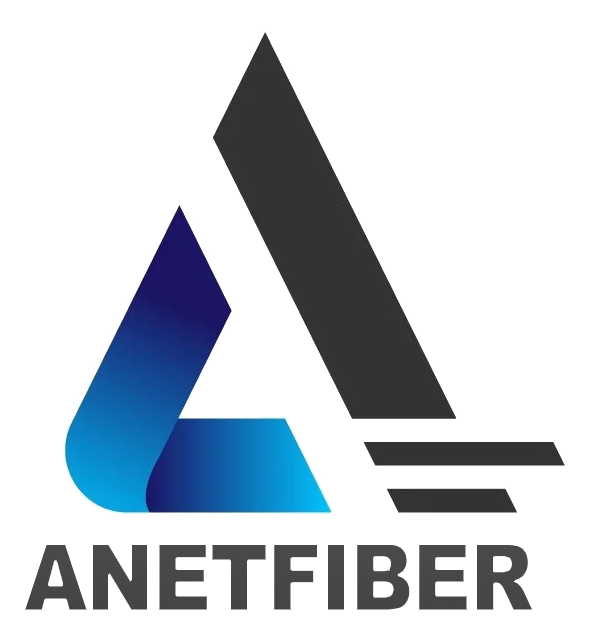The Future Trends of FTTH and 5G Integration Unveiled

What is FTTH and How Does It Connect with 5G?
Understanding FTTH
FTTH, or Fiber to the Home, is a technology that uses optical fibers to deliver high-speed internet, television, and digital services directly to homes and businesses. This means that the internet travels through thin glass fibers using light signals. With FTTH, people can enjoy faster and more reliable internet connections.
The Magic of 5G
5G is the fifth generation of wireless technology for mobile networks. It promises incredibly fast download and upload speeds, wider coverage, and more stable connections. The magic of 5G lies in its ability to handle massive amounts of data at super-fast speeds, making it ideal for applications like virtual reality, smart cities, and the Internet of Things (IoT).
How They Work Together
The integration of FTTH and 5G is a game-changer. FTTH provides the high-capacity backbone network needed to support the deployment of 5G small cells. These small cells are essential for delivering the ultra-fast speeds and low latency that 5G promises. By working together, they create a seamless network infrastructure that can meet the demands of future technologies.
Exploring the Future Trends of FTTH and 5G Integration
The integration of FTTH and 5G is set to bring about significant changes in the way we experience the internet and connectivity. Let's delve into the exciting future trends that this integration promises.
Faster Internet Everywhere
With the fusion of FTTH and 5G, faster internet speeds will become ubiquitous. This means that whether you're at home, work, or on the go, you can expect seamless streaming, quicker downloads, and virtually no lag time. The combination of fiber-optic technology with the lightning-fast capabilities of 5G will revolutionize how we interact with digital content.
What This Means for You
Enhanced Streaming: Enjoy high-definition video streaming without buffering interruptions.
Efficient Work: Experience smoother video conferences and faster file transfers.
Seamless Gaming: Engage in online gaming with minimal latency for an immersive experience.
Making Connections More Reliable
One of the most compelling aspects of integrating FTTH with 5G is the increased reliability of connections. Fiber optics are known for their stability and resistance to interference, while 5G networks offer robust coverage and consistent performance. Together, they ensure that your internet connection remains steadfast even during peak usage times or in densely populated areas.
Why It Matters
Dependable Communication: Stay connected without disruptions during important calls or virtual meetings.
Consistent Productivity: Complete tasks efficiently without worrying about network instability.
Reliability on-the-go: Access reliable internet services while traveling or in public spaces.
The Big Changes Coming
Looking ahead, the amalgamation of FTTH and 5G is poised to usher in a new era of digital transformation. From smart homes to advanced healthcare solutions, this integration will lay the groundwork for a multitude of innovations that will shape our daily lives.
How Smart Homes Benefit from FTTH Solutions
Smart homes are revolutionizing the way we live, and FTTH technology is at the heart of this transformation. By integrating FTTH solutions into smart homes, residents can experience a new level of convenience, security, and efficiency.
Lights and Locks That Listen
With FTTH powering smart homes, residents can control their lights and locks with unprecedented ease. Imagine being able to adjust the lighting in your home or lock your doors remotely using a smartphone app. This level of control not only enhances convenience but also contributes to energy savings by ensuring that lights are only used when necessary.
Benefits of Lights and Locks Integration:
Remote Access: Control lighting and locks from anywhere using a smartphone or tablet.
Energy Efficiency: Optimize energy usage by remotely managing lighting systems.
Enhanced Security: Ensure that doors are securely locked even when away from home.
Keeping Your Home Safe
The integration of FTTH with smart home security systems offers unparalleled peace of mind. Residents can access real-time video feeds from security cameras, receive instant alerts about potential intrusions, and even remotely grant access to trusted individuals. This level of connectivity ensures that homeowners can keep a watchful eye on their property at all times, no matter where they are.
Advantages of Enhanced Home Security:
Real-time Monitoring: Keep an eye on your property through live video feeds accessible via mobile devices.
Instant Notifications: Receive immediate alerts about any suspicious activity detected by security sensors.
Remote Access Control: Grant temporary access to visitors or service providers while away from home.
The Role of FTTH in Building Smart Cities
As technology continues to advance, the role of FTTH in building smart cities is becoming increasingly significant. By integrating high-speed fiber-optic networks into urban infrastructure, cities can unlock a host of benefits that contribute to a more sustainable and efficient way of life.
Traffic That Flows Like Water
The implementation of FTTH for smart cities has the potential to revolutionize urban traffic management. With the use of advanced sensors and real-time data analysis, traffic flow can be optimized to ensure smooth movement throughout the city. By leveraging FTTH, traffic signals can communicate with each other, adjusting timings dynamically based on current conditions. This results in reduced congestion, shorter travel times, and minimized environmental impact.
Advantages of Optimized Traffic Flow:
Reduced Congestion: Smoother traffic flow leads to decreased congestion and shorter commute times.
Environmental Benefits: Efficient traffic management contributes to lower emissions and improved air quality.
Enhanced Safety: Minimized stop-and-go traffic reduces the likelihood of accidents and improves overall road safety.
Clean Air and Green Spaces
FTTH for smart cities also plays a pivotal role in promoting clean air initiatives and creating green spaces within urban environments. By enabling seamless connectivity, cities can implement smart environmental monitoring systems that track air quality, noise levels, and pollution sources. This data empowers city planners to make informed decisions aimed at reducing pollution and enhancing the overall livability of urban areas.
In addition, FTTH facilitates the development of smart parks and green spaces by supporting interconnected systems for irrigation, lighting, and waste management. These green FTTH initiatives not only contribute to a healthier environment but also provide residents with accessible recreational areas that promote physical activity and well-being.
Benefits of Green FTTH Initiatives:
Improved Air Quality: Smart monitoring systems enable proactive measures to reduce pollution levels.
Sustainable Urban Development: Integration of green spaces supports environmentally conscious city planning.
Community Well-being: Accessible parks and recreational areas enhance the quality of life for urban residents.
FTTH's Impact on Education and Healthcare Through Telemedicine
As the world becomes increasingly interconnected, FTTH is playing a pivotal role in transforming the landscape of education and healthcare through telemedicine.
Learning from Anywhere
With FTTH technology, students can now access educational resources from anywhere with seamless connectivity. Whether it's attending virtual classes, conducting research, or collaborating on projects, the high-speed internet provided by FTTH enables a rich and interactive learning experience. This means that students in remote areas or those unable to attend traditional classrooms can still participate in educational activities without limitations.
Advantages of Remote Learning:
Accessible Education: Students can engage in learning activities regardless of their geographical location.
Interactive Collaboration: Seamless connectivity allows for real-time interaction and group projects among students.
Resource Accessibility: High-speed internet ensures swift access to digital libraries, educational videos, and online tutorials.
Doctor Visits from Your Couch
Telemedicine powered by FTTH brings healthcare services directly to individuals' homes. Patients can schedule virtual appointments with healthcare providers, receive medical consultations, and even undergo remote diagnostic assessments without leaving the comfort of their homes. This level of accessibility not only enhances convenience but also ensures that individuals can seek medical attention promptly when needed.
Benefits of Telemedicine:
Convenient Access: Patients can connect with healthcare professionals from their homes at their preferred time slots.
Timely Care: Remote consultations enable swift medical assessments and timely interventions for health concerns.
Reduced Travel Burden: Individuals residing in remote areas or those with mobility challenges can access healthcare services without traveling long distances.
The Exciting Connection Between FTTH, VR, and AI
Games That Feel Real
The integration of FTTH with virtual reality (VR) technology is set to revolutionize the gaming experience. With the high-speed connectivity provided by FTTH, gamers can immerse themselves in virtual worlds with unprecedented realism and interactivity. Whether it's exploring fantastical realms or engaging in intense multiplayer battles, the seamless transmission of data facilitated by FTTH ensures that every movement and action within the virtual environment is conveyed without delay.
Advantages of FTTH for VR Gaming:
Immersive Experiences: Enjoy lifelike visuals and responsive gameplay that blur the lines between reality and virtual worlds.
Multiplayer Connectivity: Engage in seamless multiplayer experiences with minimal latency for a truly interactive gaming environment.
Expanded Possibilities: Access a diverse range of VR gaming content, from educational simulations to thrilling adventures, all made possible by high-speed internet connectivity.
Smart Helpers in Your Home
Artificial intelligence (AI) applications powered by FTTH are transforming homes into intelligent living spaces. Through the integration of AI assistants and smart home devices, residents can streamline daily tasks, enhance convenience, and even optimize energy usage within their living environments. With the robust connectivity offered by FTTH, these AI applications can seamlessly communicate with external servers, process complex commands, and provide real-time assistance to homeowners.
Benefits of FTTH-enabled AI Applications:
Personalized Assistance: AI-powered devices can learn user preferences and adapt their functionality to meet individual needs.
Energy Optimization: Smart home AI systems can regulate energy consumption based on usage patterns and environmental conditions for efficient resource management.
Task Automation: Simplify household chores through voice-activated commands that control various appliances and systems within the home.
The Exciting Connection Between FTTH, VR, and AI
Looking Ahead: The Bright Future of FTTH and 5G Together
As the integration of FTTH and 5G continues to evolve, it paves the way for a world that is more interconnected than ever before. The future holds boundless possibilities as these technologies converge to bring dreams into reality.
A World Connected
The synergy between FTTH and 5G is propelling us towards a world where connectivity knows no bounds. From bustling urban centers to remote rural areas, the seamless integration of these technologies ensures that everyone can partake in the digital revolution. Whether it's high-speed internet access for educational pursuits or leveraging smart city initiatives for sustainable living, the connected world made possible by FTTH and 5G integration fosters inclusivity and innovation.
In this connected world, information flows effortlessly, enabling individuals to stay informed, businesses to thrive, and communities to prosper. The fusion of fiber-optic networks with ultra-fast wireless capabilities creates an ecosystem where communication transcends geographical barriers, opening up new avenues for collaboration and progress.
Dreams Becoming Reality
The bright future of FTTH and 5G integration brings forth a landscape where long-envisioned dreams become tangible realities. Imagine immersive virtual experiences powered by lightning-fast connectivity, telemedicine revolutionizing healthcare accessibility, and smart cities optimizing resource management for sustainable urban living. These are not just futuristic concepts but tangible outcomes that are within reach due to the harmonious interplay between FTTH and 5G.
Moreover, this convergence sets the stage for unprecedented technological advancements that will redefine how we interact with our surroundings. From augmented reality applications enhancing everyday experiences to AI-driven innovations shaping intelligent living spaces, the amalgamation of FTTH and 5G lays the foundation for a future where innovation knows no bounds.
In essence, the bright future of FTTH and 5G together promises a world where connectivity empowers individuals, enriches communities, and transforms aspirations into achievements.
See Also
Innovative Progress in Next-Gen FTTH Tech Advancements
Unveiling Symmetrical Gigabit Speeds in Future FTTH Tech
Fiber Optics' Vital Role in 5G Network Infrastructure
Fiber Optics' Critical Role in 5G Network Deployment
Key Principles for High-Speed Internet in FTTH Network Design


